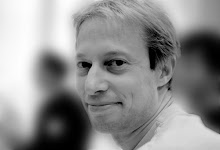Design Management Institute inviterer den 14.-16. marts til den 11. DMI European Design Management Conference under overskriften IMPROVING AND MEASURING DESIGN’S ROLE IN BUSINESS PERFORMANCE. Konferencen afholdes på Copenhagen Marriott Hotel.DESIGNS BETYDNING FOR BUNDLINIEN Nytænkning er fremtidens krav til dansk erhvervsliv. Når virksomheder ikke kan konkurrere på pris, må der tænkes anderledes. Det får du mulighed for ved at deltage i DMI European Design Management Conference – en unik mulighed for at tilegne sig den nyeste viden indenfor design, innovation og ledelse.• Hvordan skabes vækst via design?• Hvordan kan design anvendes til at skabe vedvarende konkurrencefordele?• Hvordan kan virksomhedens brand styrkes gennem brug af design?• Hvordan måles designs betydning for virksomhedens præstation?Konferencen byder på indlæg fra ledere i danske og internationale virksomheder og organisationer: Darrel Rhea (CEO, Cheskin), Hartmut Esslinger (CEO, frog design), Hans Gunleiksrud (Global Brand Manager, Helly Hansen), Jerry Kathman (President & CEO, LPK), Cathy Huang (President, CBI, China Bridge International), Verena Klos (President, BMW Group), Harry Rich (Deputy Chief Executive, Design Council), Bo Linnemann (Founder, Kontrapunkt), Per Holmen (Global Brand Identity Manager, Carlsberg), Lise Kingo (Executive Vice-President, Chief of Staff, Novo Nordisk A/S) og Lavrans Løvlie (Founding Partner, live work).Konferencen retter sig mod såvel små som store virksomheder. Yderligere information samt tilmelding fi ndes på http://www.dmi.org/european. Se også pre-conference seminaret DESIGN RESEARCH FOR PRODUCT AND SERVICE INNOVATION der ligger forud for konferencen. Information findes på http://www.dmi.org/seminars.
Text in english from: http://www.dmi.org/dmi/html/conference/europe07/conference.htm
2007 DMI Design and Design Management Performance Series
The 11th DMI European Design Management Conference
Improving and Measuring Design’s Role in Business Performance
14–16 March 2007 Copenhagen Marriott Hotel, Denmark
Business executives, design directors and design managers are asked more and more often to provide improvement and measurement of design and design management effectiveness, in order to achieve desired business results. How is this best accomplished? What criteria must be evaluated in order to improve? Are measurements subjective or objective? Is this based on customer satisfaction, emotion, time to market, innovation, return, new markets, process improvement, or social and environmental responsibility? DMI addressed these challenging questions at the 31st International Design Management Conference in the US, and will build upon this successful learning with further exploration at this European conference.
Businesses need to capture real value from their investments in design, therefore DMI has identified nine key categories to improve and measure design’s role in business success, which include:
- Purchase influence / emotion
- Enable strategy / new markets
- Enable product and service innovation
- Reputation / awareness / brand value
- Time to market / process improvement
- Cost Savings / ROI
- Customer satisfaction
- Developing communities of customers
- Triple Bottom Line
With a portfolio of experts we will explore these categories in detail. The learning outcome: conference attendees will discover macro and micro tools and techniques, gain perspective, and become equipped to address this topic in your work on Monday morning, and in your work for years to come. Don’t miss this unique opportunity to learn.




